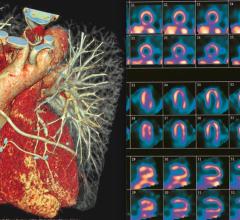
Ann Marie Navar, M.D., Ph.D.
Aug. 13, 2024 – The traditional lipid panel may not give the full picture of cholesterol-related heart disease risk for many Americans, according to a study led by UT Southwestern Medical Center researchers and published in JAMA Cardiology.
There are different types of cholesterol particles that can cause heart disease, including low-density lipoproteins (LDL), very low-density lipoproteins (VLDL), and intermediate-density lipoproteins (IDL). LDL-C is a measure of the weight of cholesterol in LDL particles and is one of the most common tests people use to measure cholesterol risk. Every LDL, VLDL, and IDL particle has a single protein on its surface called apolipoprotein B (apoB).
Prior research has shown that the number of “bad” cholesterol particles, measured by a blood test for apoB, is the most accurate marker for cholesterol risk. However, current guidelines do not recommend testing for apoB in all people. Instead, most only have their LDL-C measured, but that does not test for the total number of LDL particles. Measuring LDL-C alone may not be adequate to find people with high apoB levels, UTSW researchers and colleagues said.
“For most patients, the LDL-C measurement is usually ‘good enough’ because people with high LDL-C also usually have high apoB and vice versa, but that’s not true for everyone,” said senior author Ann Marie Navar, M.D., Ph.D., Associate Professor of Internal Medicine in the Division of Cardiology and in the Peter O’Donnell Jr. School of Public Health at UT Southwestern. “Some people have high apoB but a relatively low LDL-C, so their heart disease risk is underestimated by not measuring apoB. Others may have a high LDL-C but a low or normal apoB, and they aren’t at risk.”
Because the weight of cholesterol particles can vary from person to person, LDL-C and apoB measurements don’t always line up. When apoB levels vary from estimated values, they’re called “discordant.” In the case of patients with low or normal-appearing LDL-C and a high apoB level, LDL-C measurements may offer a false sense of security. This happens more commonly in people with metabolic risk factors such as obesity, diabetes, or high triglycerides. But even people without these conditions can have discordance.
The research team used data from the National Health and Nutrition Examination Survey (NHANES) to assess apoB discordance in the U.S. population. The NHANES database included apoB, LDL-C, high-density lipoprotein cholesterol (HDL-C, or “good” cholesterol), total cholesterol, and triglyceride levels for 12,688 adults measured between 2005 and 2016. To determine the discordance level for each individual, Dr. Navar and her colleagues calculated the difference between observed and expected apoB levels based on LDL-C.
As expected, apoB levels for patients in the study with metabolic risks were higher than predicted values. However, some metabolically healthy patients also had apoB levels that varied significantly from expected measures. Physicians following U.S. guidelines may overlook people who are at higher risk of developing atherosclerosis despite normal metabolic health markers.
The study includes an online calculator for the public to estimate apoB levels based on the LDL-C level. As Dr. Navar explained, a higher-than-expected apoB level indicates a risk of heart disease that is greater than can be calculated by LDL-C alone.
Eric Peterson, M.D., M.P.H., Vice Provost and Senior Associate Dean for Clinical Research at UT Southwestern, contributed to this study. Dr. Peterson, who is also Professor of Internal Medicine and Vice President for Health System Research, holds the Adelyn and Edmund M. Hoffman Distinguished Chair in Medical Science.


 January 23, 2024
January 23, 2024 








